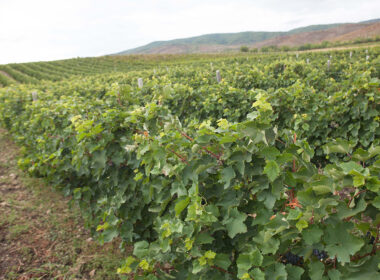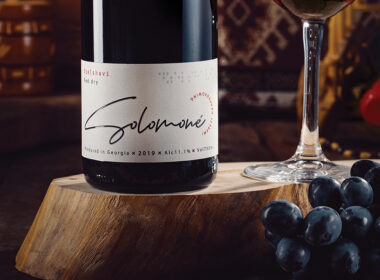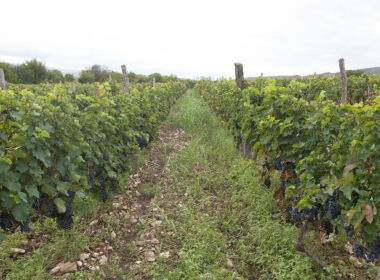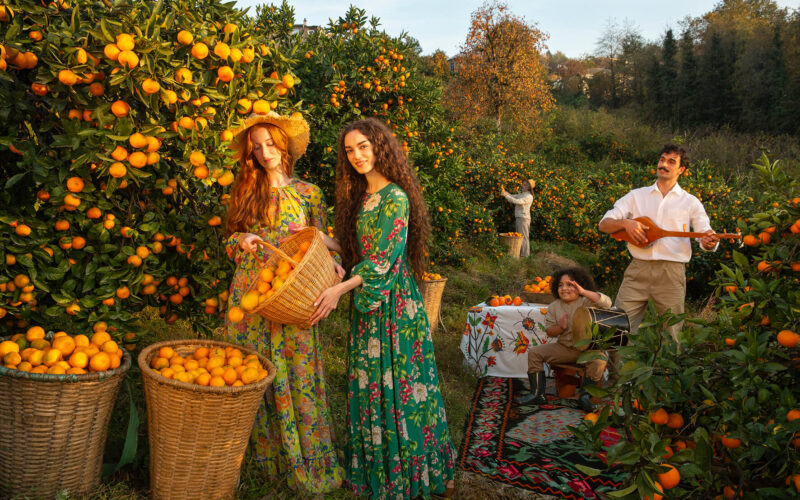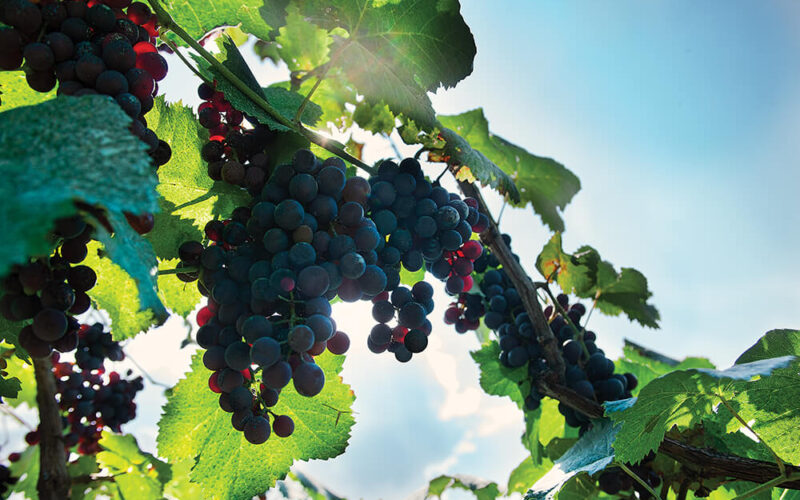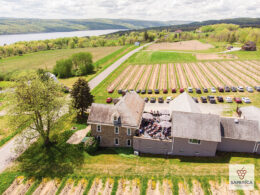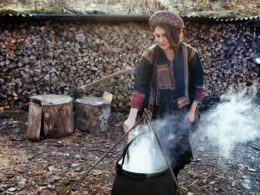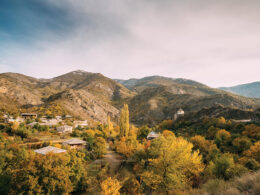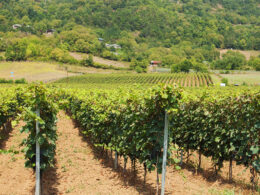Food & Travel | Keti Kvichidze
Embarking on a culinary expedition through Ajara, the Black Sea region of Georgia, we knew that an amazing variety of dishes awaited us. I will tell you their story in three parts: flavours of Kobuleti, the cuisine of highlands of Ajara and Lazeti cuisine.
Flavours of Kobuleti
Once you pass the border of Guria, you will find yourself in Kobuleti Municipality. It will immediately amaze you with its subtropical nature, the sea, the Sun, pine groves, eucalypti, kiwi and feijoa gardens and citrus plantations. Local orange, tangerine and lemon orchards, along with endless cornfields, look like paintings created by an artist.
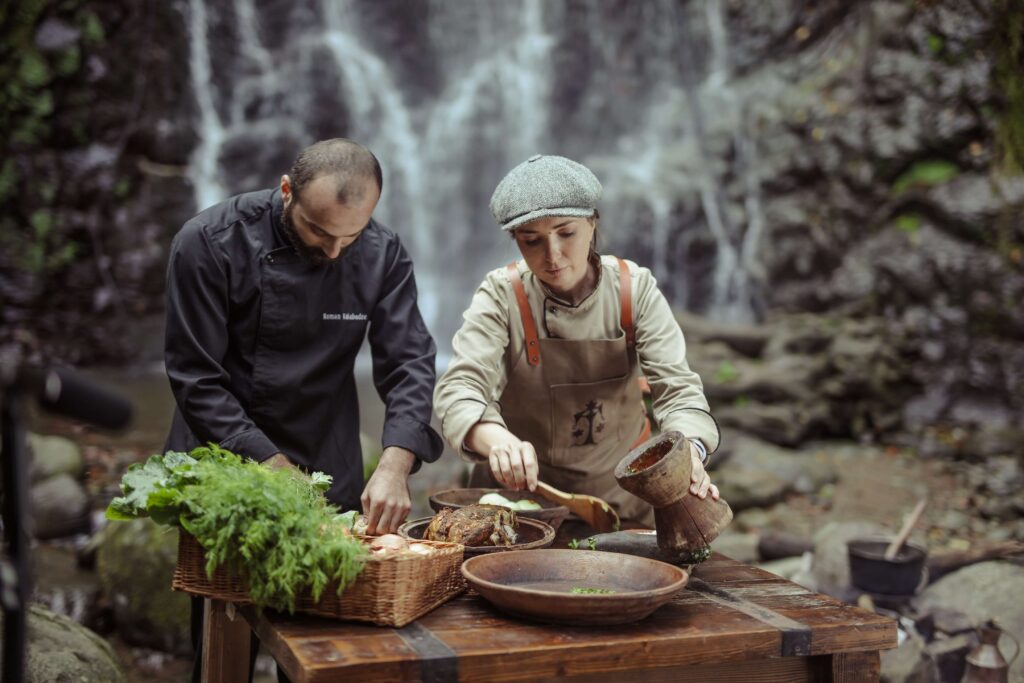
The climate of Kobuleti is especially good for the cardiovascular system. Walking on the sea shores abounding in pine trees, you know that you are immune to any heart disease. Local dishes are as diverse and interesting as local nature. Our journey starts from Esadze family ethno-house in the the village of Leghva.
The moment you get here, you will feel like you are in a fairytale: grandmother – our host – smiles from the window of a two-story house; a small storage hut is surrounded by mossy pine trees. We light a fire in the yard and start baking mchadi (millet bread) in rhododendron leaves on ketsi (a clay pan). Mchadi goes especially well with a Kobuletian “Iakhni” – a Kharcho-type meat dish, cooked mostly on holidays.
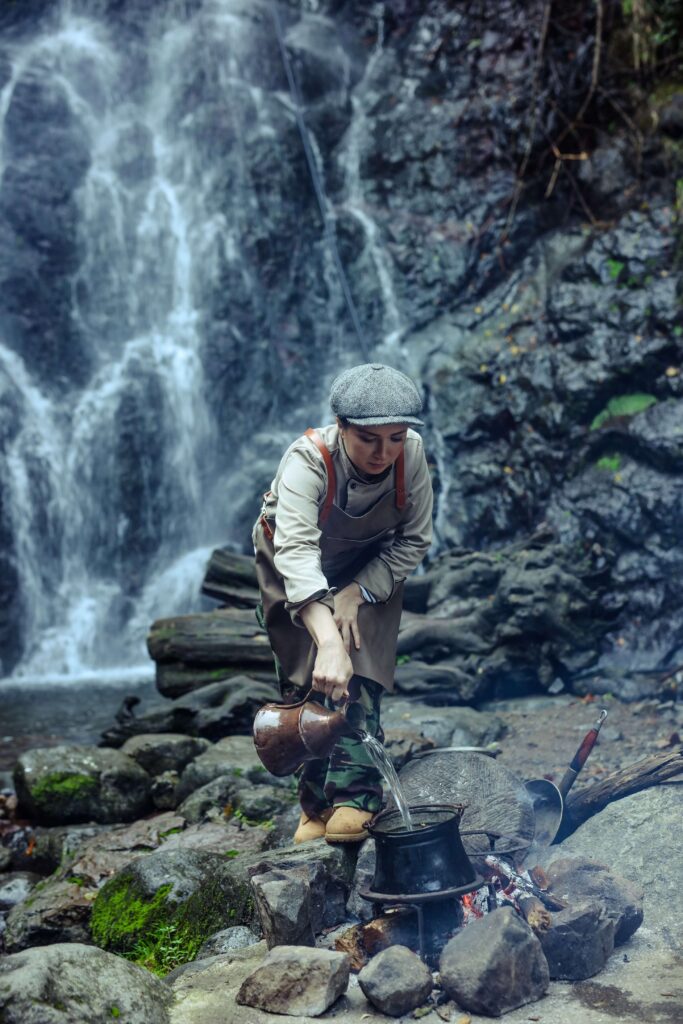
One of the essential ingredients of “Iakhni” is walnut, which has long been used in Western Georgian dishes. But what gives the dish its special aroma is the yellow marigold (Tagetes – Latin), commonly referred to as “saffron” in Georgia. Before it’s used in any dish, it is dried well in the oven. To make the spice mix for “Iakhni” you take dried marigold flowers (ground in the palm of your hand), dried coriander, black pepper and combine them with walnuts. The mixture is kneaded until the oil appears. Then, you fry the boiled beef with onions, add the walnut and spice mix, and bring the whole mass to a boil. Add crushed garlic and salt to taste.
Achma – a type of Khachapuri and the pride of Kobuleti (dishes similar to “Achma”, such as lasagna, moussaka and börek, can be found in mediterranean and black sea basin countries). To prepare it, we first combine wheat flour and water to make the dough, make flat layers and boil them in water. We stack the boiled layers of dough alternating with fillings of fresh cheese, remembering to dab each layer with melted butter. “Achma” is baked in the oven until the top layer turns golden.
Ajara is also distinguished by the variety of desserts: “Baklava”, “Shakarlama”, “Lecheri”, “Kaisafa”, “Majuni” and others. I will tell you about “Majuni”, since it is only made in Kobuleti. The name “Majuni” can be found in 16th century materials, but its exact meaning is unclear. What we know is that in the past “Majuni” was made with various fruits, vegetables and grains.
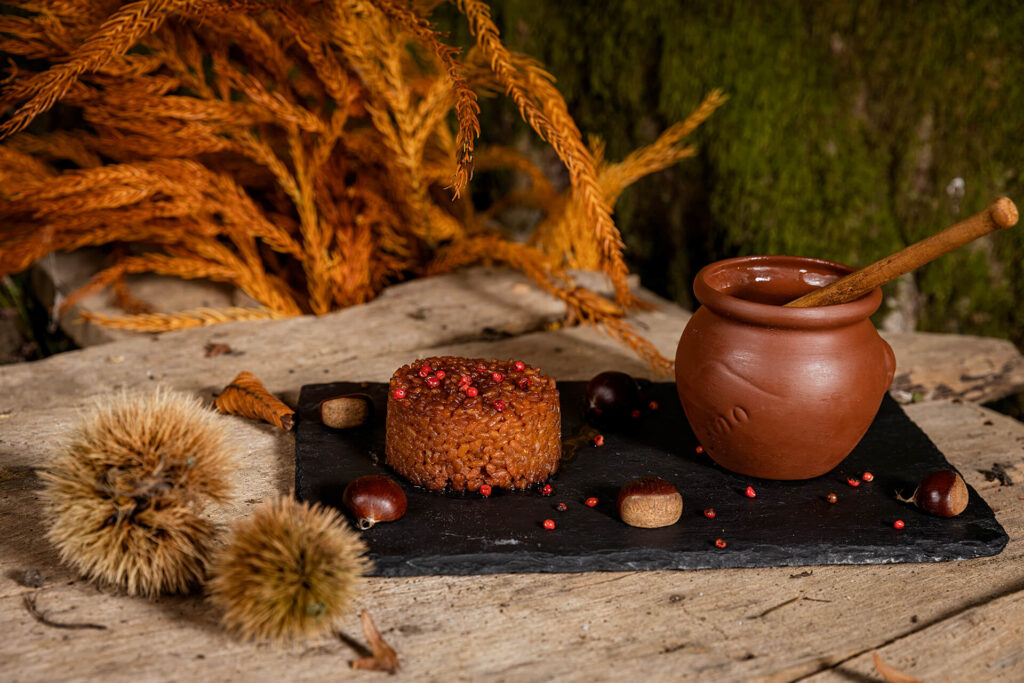
Kobuletian “Majuni” is made from rice, which has been grown in Georgia for centuries (until 1900). Rice dishes can still be found in cuisines of Kobuleti and Guria. “Majuni” is a combination of boiled rice, sugar and black pepper. In general, the use of sweet and spicy flavours in dishes has been one of the characteristics of Georgian cuisine since ancient times. A similar synthesis can be found in “Majuni” – an ancient dish, which we restored, prepared and tasted.
Lazeti cuisine
On the way from Kobuleti to Batumi, we see Petra – a magnificent Byzantine fortress. Amazing scent of citrus, combined with sea breeze, accompanies us the whole way. We arrive at the border, in the village of Sarpi to tell you about Laz cuisine.
Years ago, when we started our “culinary expedition”, I could not even dream of traveling to the Laz people and getting acquainted with their traditional cuisine (which I thought would resemble Megrelian). However, I was lucky enough to have this opportunity on a number of occasions. During the expedition we got to know their cuisine and customs and set a goal to revive traditional Laz dishes.
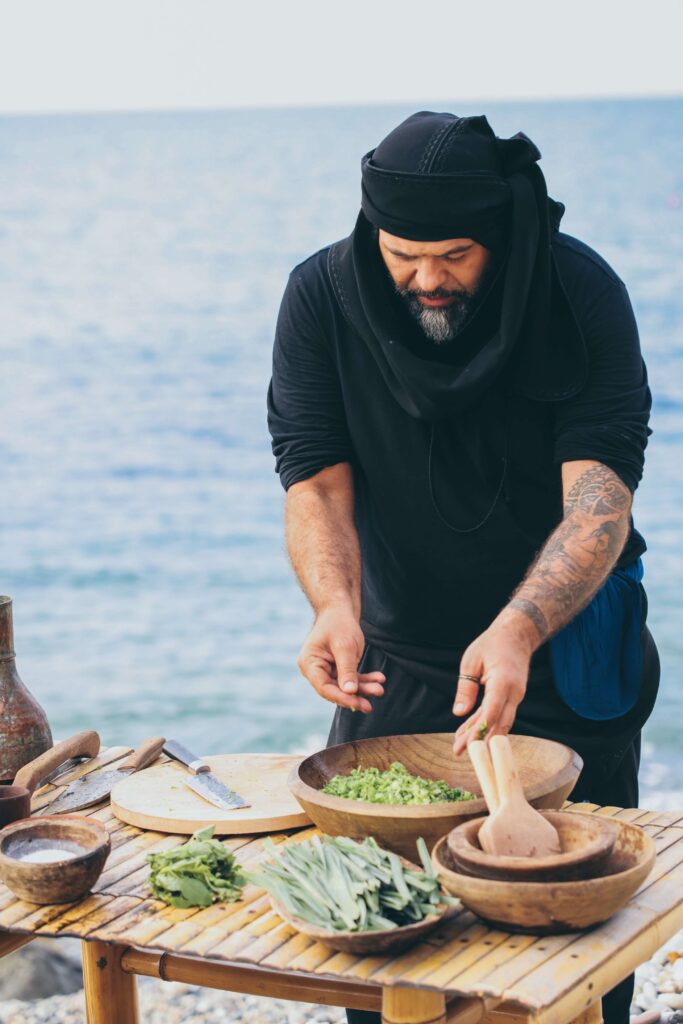

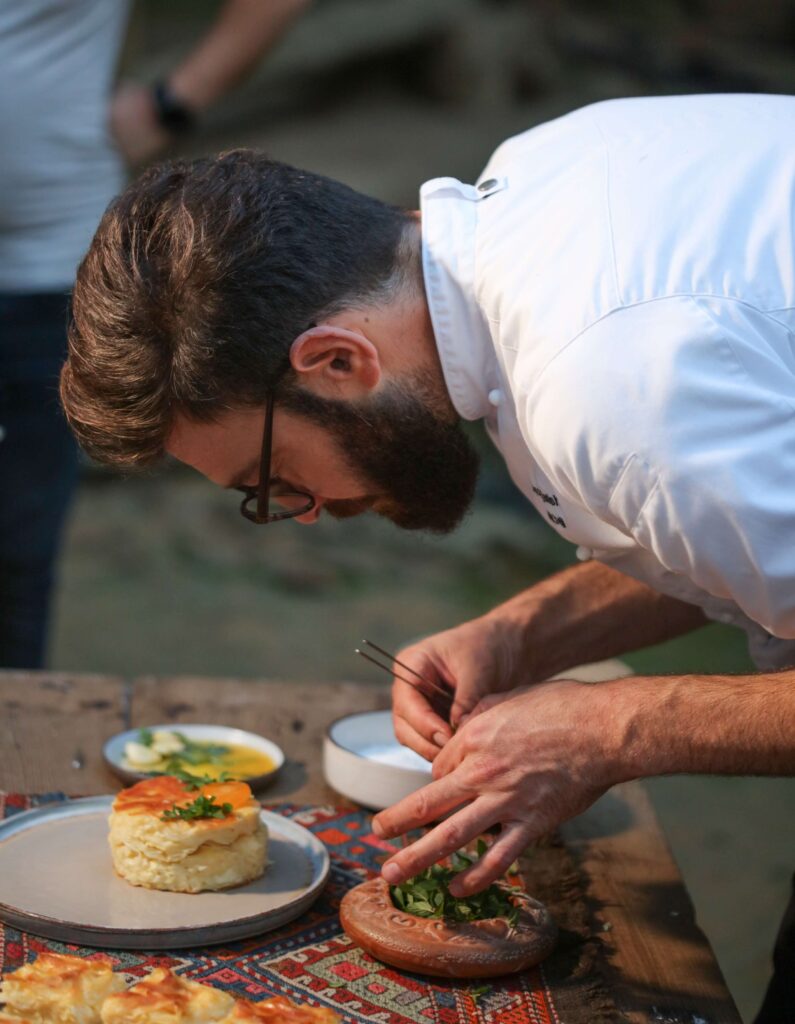
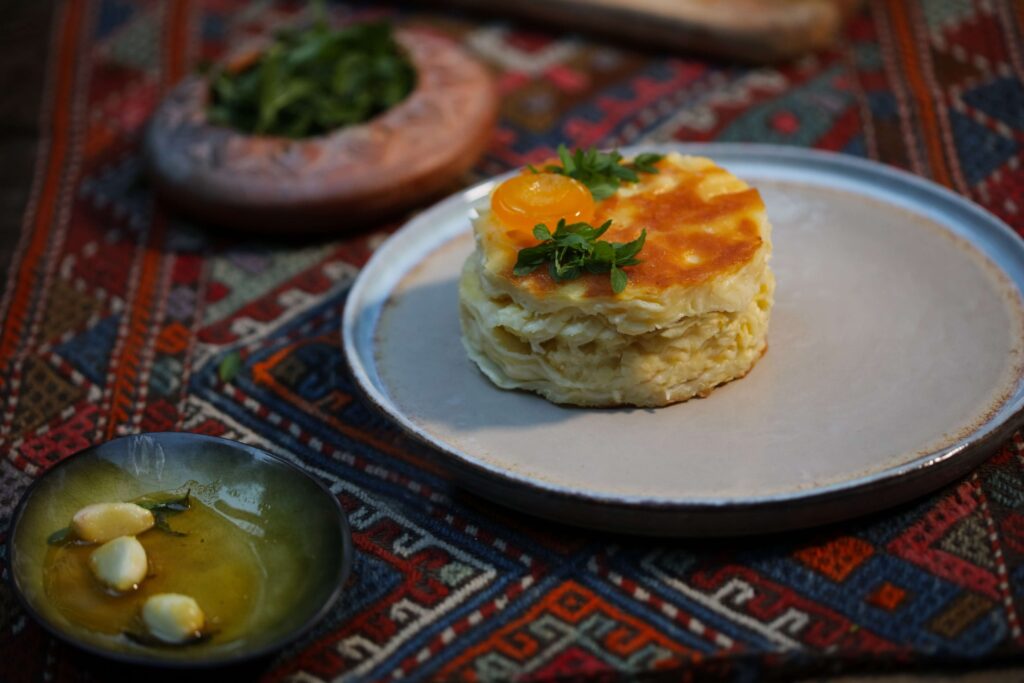
The Laz people are one of the oldest inhabitants of the Black Sea East Cost and direct descendants of the legendary Colchis civilization along with their closest relatives, Megrelians. Lazeti cuisine has not gained world popularity yet, but according to a legend, the “Adjarian Khachapuri” so popular in Britain, the United States, Japan and other countries, originates in Lazeti. The “Adjarian Khachapuri” is made in a shape of a boat, and the Laz people are specialised in sailing. The legend says that a fisherman’s wife prepared the first Ajarian Khachapuri in a shape of a boat to honour the craft, placing an egg yolk in the centre as the symbol of the Sun and fertility.
Lazeti cuisine is the only cuisine rich in seafood, which we rarely encounter in other regions of Georgia.
We are making “Kapshia Taghanai”: a dish made with fresh European anchovy. An important ingredient of this dish is Sotolie (a kind of red spinach), that is finely diced with Kohlrabi stems and onion, mixed with corn flour, spiced with red pepper, combined with the anchovies and baked in the oven.
The next dish, “Mchkidebi” is easy to prepare at home: just coat the anchovy in flour and bake them in the oven. The crown jewel of the Laz Supra is “Lukududei”. It is as simple to prepare as it is affordable. You will only need beans and greens (phkali). A similar dish is prepared in highlands of Ajara, but they use butter, instead of suet.
The Laz people follow all the rules and etiquette of Lazeti cuisine. Their Supra traditionally ends with a variety of elegantly made desserts. One of them is “Bureghi” – a dessert that will remain in my memory as a sweet-spicy dish with a splendid taste and aroma, an amazing pleasure to taste.
A sweetened mixture of flour and milk is poured onto a layer of filo-dough, spiced with black pepper and covered with another layer of dough. The top is covered with a layer of butter and baked in the oven.
The cuisine of highlands of Ajara
We continue our journey to the highlands of Ajara, to the towns and villages built on the Meskheti Range. The cuisine here is very similar to Meskhetian. One can clearly feel a common source of origin, intertwined with the sea, waterfalls, rivers, mountains, vineyards and cornfields.
At the base of a “nalia” (a storage hut), grandmothers are preparing tobacco leaves for drying. We listen to stories about local dishes, as we help them cast tobacco leaves on to the thread.
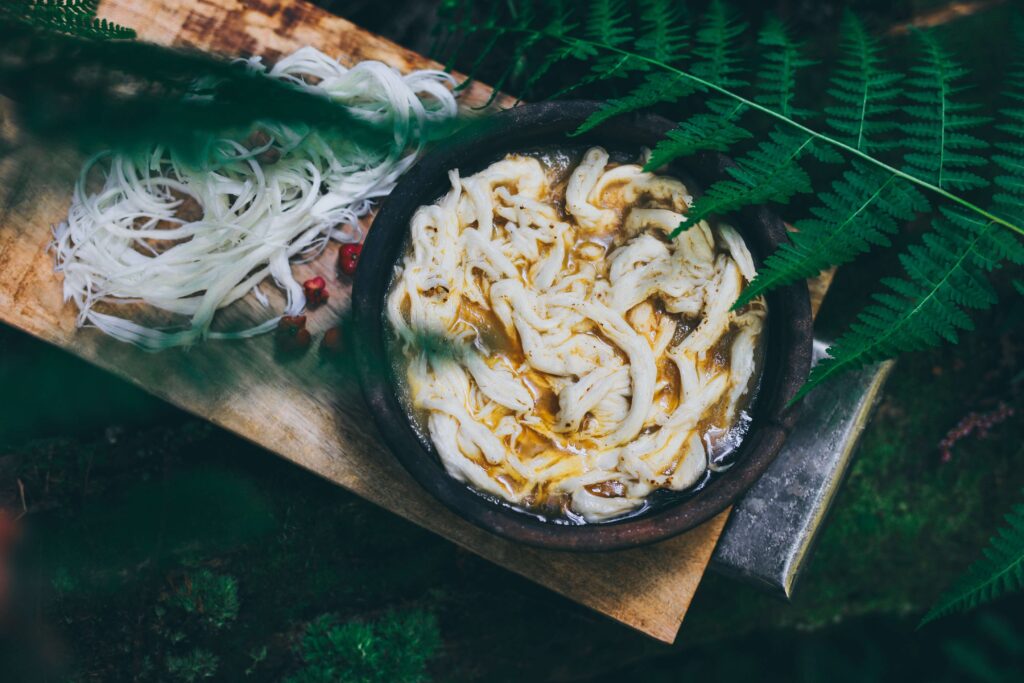
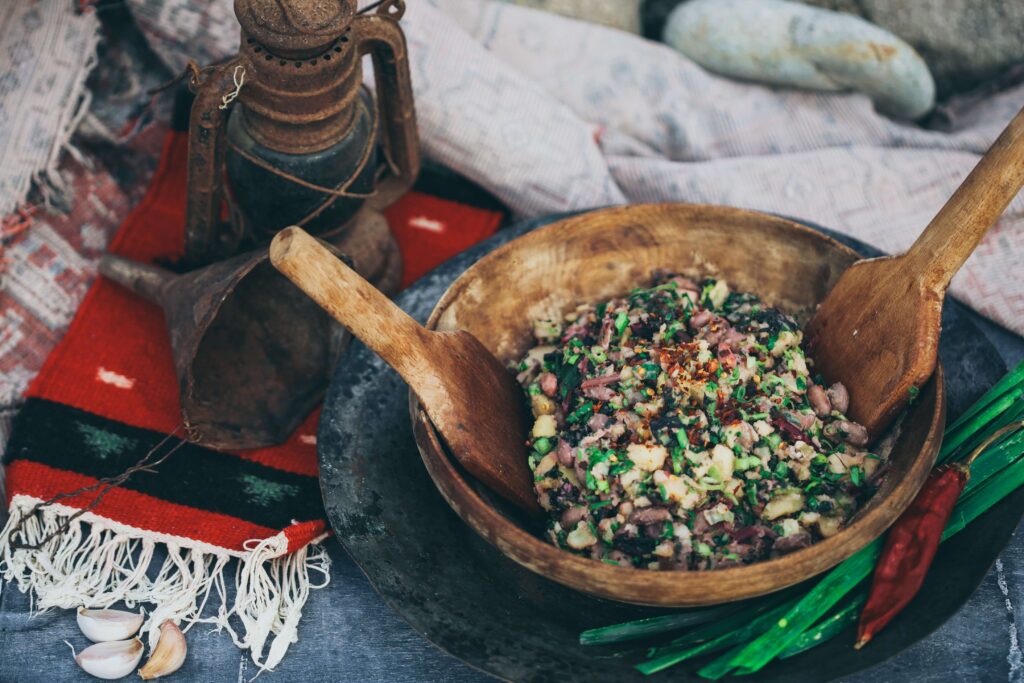
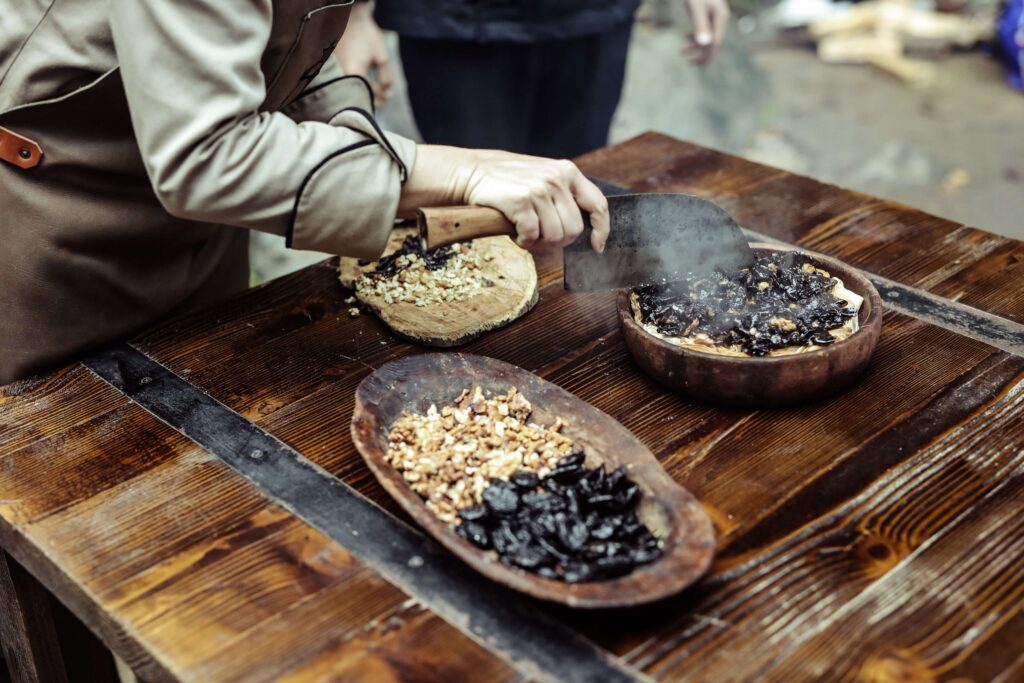
The two main staples of the local cuisine are “Sinori” and “Borano”. I would compare “Borano” – a dish that might seem simple at first – to the Swiss fondue. A stringy Chechili cheese is pulled apart and soaked in boiled water. Melted iaghi (butter) is heated up on the stove until golden and covered with soaked (drained) cheese. The cheese melts in hot butter. It becomes stretchy and delicious. And just like this, this simple, but wonderful dish is ready.
“Sinori” is made with thin layers of no-yeast dough that are folded and baked and covered in nadughi (curds) and melted iaghi (butter). The dish can be topped off with garlic, walnuts and honey, depending on the taste you are looking for.
In the old times, chicken or beef “apokhti” (salted, cold-dried meat) hung in every household of Ajara. Nowadays, only a few remember this delicacy. We tried to revive it to make stuffed Kohlrabi stem rolls. These rolls are frequently prepared in Ajara, especially on holidays. The filling is stuffed in black pkhali or Kohlrabi stems, called “lakhana” in Keda (“lachano” means cabbage in Greek).



Towards the end, I must tell you about the sun-drenched vineyards on the slopes of the mountains of Ajara. Ampelographers report up to 50 endemic species in this region, many of which are extinct. Only “Satsuri”, “Povnili”, “Khopaturi”, “Kharistvala” and “Kaikatsisshvili Tetra” can be found here and there. Nevertheless, there are plenty of “Tsolikouri” and “Chkhaveri”, which should be paired with all of the dishes described above.
#visitbatumi

